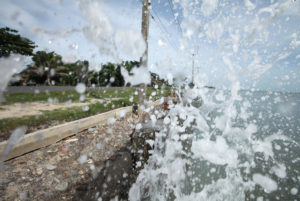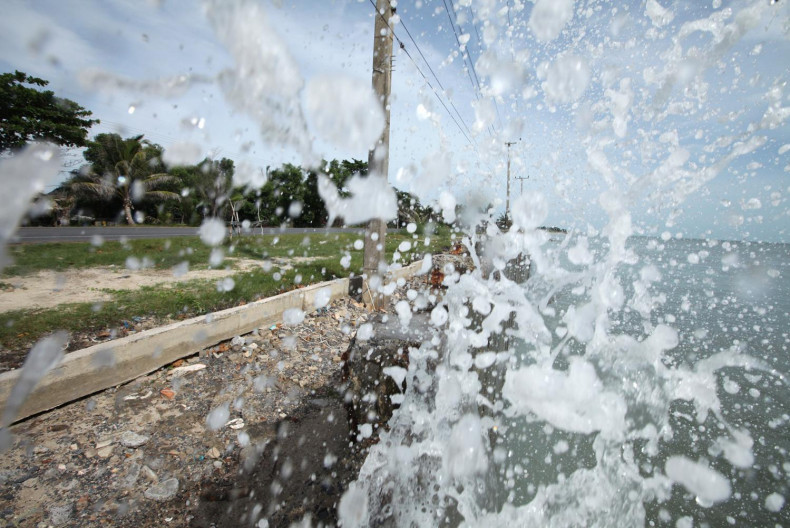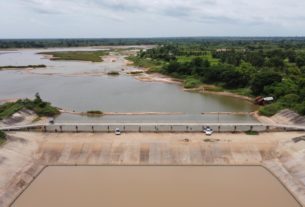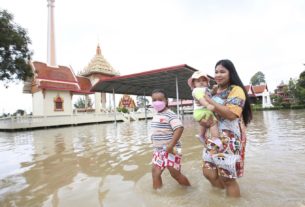 Seawalls are no panacea to Thailand’s worsening coastal erosion
Seawalls are no panacea to Thailand’s worsening coastal erosion
Last week, the environmental group Beach for Life launched a protest to urge the Ministry of Natural Resources and the Environment to review its policies on the construction of seawalls and breakwaters intended to help prevent coastal erosion.
The group, which represents 94 civil groups and coastal communities, demanded the ministry overturn a ministerial resolution issued about nine years ago, which allowed the Public Works and Town Planning Department (DPT) to build such structures along the coast without conducting an environmental impact assessment (EIA).
As their protest failed to attract the attention of Environment Minister Varawut Silpa-archa, the group decided to march to Government House, where they received guarantees from a government representative that their demand would be considered.
Hopefully, it wasn’t just an empty promise.
The cold shoulder from Mr Varawut was surprising, if not alarming. After all, he was known for his active role in protesting the construction of such seawalls, which experts say are worsening coastal erosion instead.
Last year, the ministry proposed dismantling three out of the eight seawalls and barriers built in front of Mrigadayawan Palace in Phetchaburi after experts from Kasetsart University conducted a thorough study on the structures’ impact on beaches in the nearby Cha-am district.
That said, seawall construction has continued unabated along various parts of Thailand’s coastline, despite clear evidence showing that such structures are not an effective way to halt erosion. In fact, several beaches have disappeared altogether after seawalls were completed.
While climate change is what’s causing sea levels to rise, a significant part of the problem is the government’s land development policies, which enabled massive buildings and jetties to be built right on the beach, preventing sediment from further inland settling on (and thus protecting) the coast.
The government used to rely on “softer” approaches, such as planting mangroves along the coast or using degradable materials such as bamboo to construct temporary breakwaters to prevent erosion. But in recent years, more permanent structures have taken over, as the DPT and local authorities increasingly turn to concrete walls as a quick fix for more severe coastal erosion.
The construction of seawalls mushroomed after the Yingluck Shinawatra cabinet in 2013 scrapped EIA requirements to expedite the construction of such structures.
Under the more relaxed environmental regime, the DPT received an additional 8.48 billion baht to build 125 seawall and sand barrier projects.
It is about time the government reimposed tough rules on such projects and demanded that local authorities conduct an EIA before a project can proceed.
More importantly, the government must also promote other approaches, such as replanting coastal forests, banning further development of certain coastal areas, and finding ways to ensure more soil and sediment can make their way to the sea.
Make no mistake; not all seawalls and breakwaters are useless. In fact, some areas can actually benefit from them. However, the government must realise that such structures aren’t a panacea and that under the current environmental regime, concrete seawalls are not always the solution and can indeed become part of the problem.
EDITORIAL
BANGKOK POST EDITORIAL COLUMN
These editorials represent Bangkok Post thoughts about current issues and situations.
Source: https://www.bangkokpost.com/opinion/opinion/2459055/seawalls-are-no-panacea



